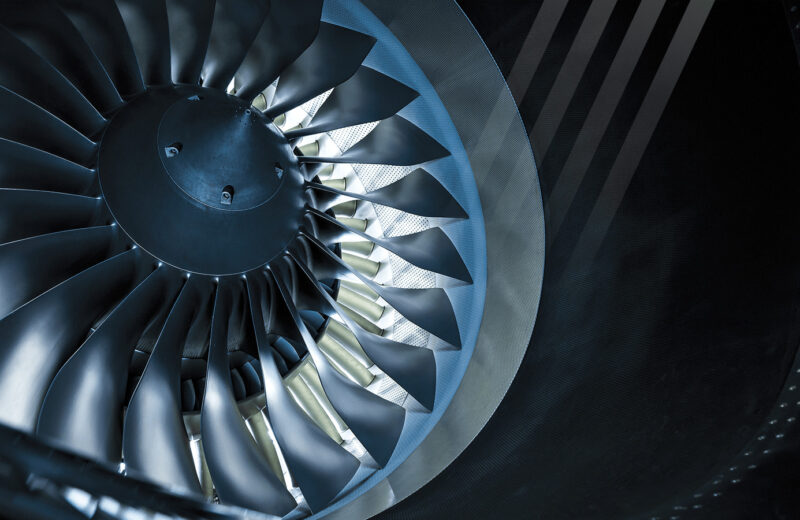Power games mean a new super-mid size jet is coming

Engine manufacturers spend a lot of time trying to reduce noise. But this is nothing like the effort they put into keeping their research and development quiet.
The past few years have seen a lot of focus on large and ultralong aircraft like Bombardier’s Global 7500 and Global 8000; Dassault’s Falcon 10; and the Gulfstream 700 and Gulfstream 800. These aircraft are, of course, only possible because of new engines: GE’s Passport engines on the Globals; and Rolls-Royce’ Pearl engines powering the Dassault and Gulfstream aircraft.
Now the engine battleground has shifted.
Corporate Jet Investor knows that one aircraft manufacturer is now in serious talks with engine makers about a new power source for a new super-mid size aircraft. The aircraft is set to be announced this year.
“There is a definite gap for a new engine in the 9,000lb to 11,000lb thrust range,” says Shawn O’Day, founder, O’Day Aviation Consulting who worked at GE Aerospace. “It is a space that has been waiting to be filled for a long time.”
There are already four manufacturers powering aircraft around this 10,000lb thrust gap. Honeywell has the HTF7000 on the Challenger 3500, Cessna Longitude, Gulfstream G280 and the Praetor 500 and Praetor 600. GE has the CF34-3 on the Challenger 604/650 and Challenger 850s. Rolls-Royce’s AE3007 is on the Embraer Legacy 600 and Legacy 650. Pratt & Whitney Canada has the PW300 range on the Latitude, Falcon 7X, Falcon 8X and Falcon 2000 and the PW812 on the Falcon 6X and Gulfstream 400. We could also see Safran try to renter the market with its Silvercrest engine.
To be picked, it looks likely that they will need a brand new engine design. O’Day says that adding thrust to smaller engines is not easy: “A 3,000lb thrust increase does not sound like a lot – especially if you are thinking of larger engines. But for a 6,000lb engine that is a 50% increase.”
“A 3,000lb thrust increase does not sound like a lot – especially if you are thinking of larger engines. But for a 6,000lb engine that is a 50% increase.”
Engine makers only have one chance to win. There have been cases where bidding teams back at headquarters have gone to bed confident that their engine has been chosen only to be woken hours later to be told that a competitor slashed their bid to win.
Even when they are picked by OEMs, there is no guarantee that the aircraft will be successful. In 1996 Pratt & Whitney Canada was selected for the innovative carbon-fibre Hawker 4000 which looked amazing on paper. The first of just 73 Hawker 4000s was only delivered in 2008.
Honeywell was picked for the Challenger 300 in 2004 and ended up with fantastic market share in the super-mid-size niche. But relationships can get strained even when aircraft sell. Bombardier took Honeywell to court last year arguing the engine manufacturer had been selling its engines to competitors for lower prices which broke an agreement. Honeywell is now appealing this ruling in Canada’s Supreme Court.
Do not expect any announcements in the next few months. But behind the scenes the super-mid power game has started.
Update – April 9, 2024: In a Honeywell blog celebrating 10,000 million flight hours of the HTF700 the company has confirmed that it is working on a new engine.
Jeff Aitchison, senior chief engineer senior HTF7000, Honeywell said: “Building on the success of our HTF7000 engine family, we’re currently developing a new family of gas turbine engines that will be lighter, quieter and more powerful, with the ability to run on 100% sustainable aviation fuel.”
The blog demonstrates how important the super-mid size market is to Honeywell. “We’re expecting to build more than 400 HTF7000 series engines in 2024, and as many as 4,500 over the next decade or so as the demand for super-midsize jets continues to grow,” said Dave Marinick, President of Engines and Power Systems, Honeywell.
“In all, we anticipate a production run of close to 8,000 engines over the life of the program. Those numbers are a tribute to the thousands of Honeywell employees – past, present and future – who contributed to this landmark program. We can all feel enormous pride in reaching this significant 10-million-hour milestone,” said Marinick.
Subscribe to our free newsletter
For more opinions from Corporate Jet Investor, subscribe to our One Minute Week newsletter.








